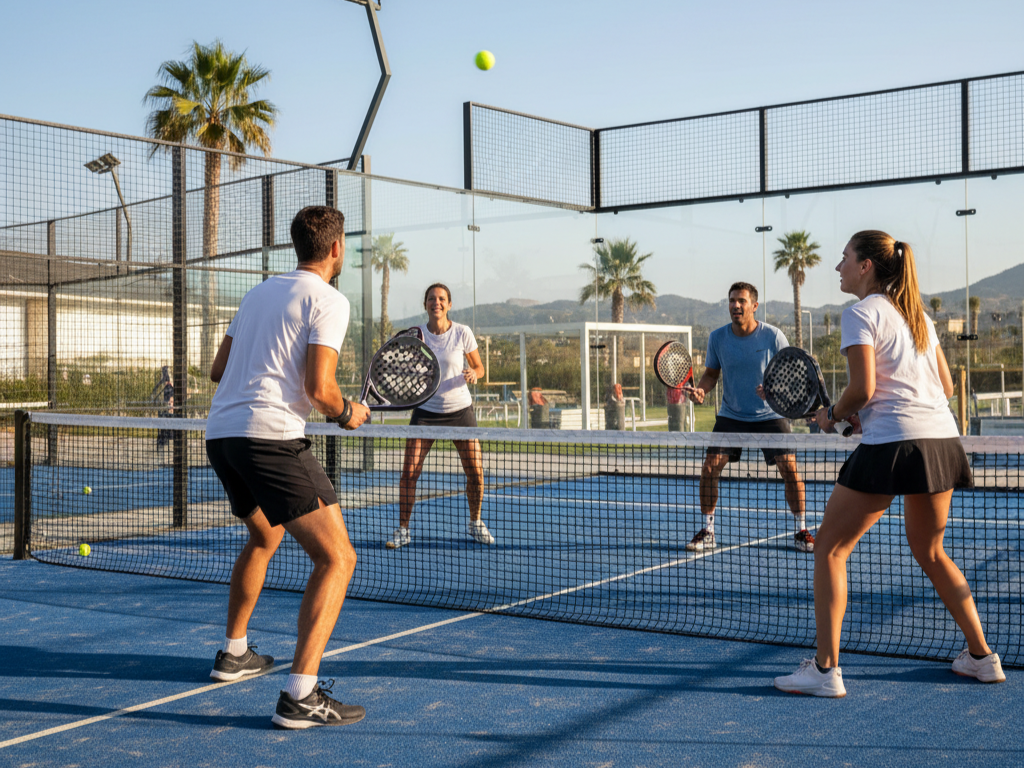Drive vs. Revés: Decoding the Key Differences in Padel Doubles
In the strategic game of padel doubles, success depends on efficient execution and effective partnership. A fundamental team decision involves assigning each player to a specific side of the court.
The padel court introduces two distinct roles for doubles teams, often designated as the Right Side (Drive) and the Left Side (Revés).
The assignment of these roles is critical. It influences the types of shots a player will execute most often, as well as their main tactical and positional responsibilities within the partnership. Understanding these two specialized positions is essential for developing an effective team dynamic.
Technical and Shot Specialization
The most evident distinction between the two sides lies in the dominant stroke each player employs.
The Right Side (Drive) is named after the drive, or forehand stroke. This player finds most balls landing on their forehand side. For most players, the forehand is their most powerful and controlled shot, meaning the Drive player is primarily responsible for offensive consistency and accurate shot placement, particularly when volleying at the net. They use their strong forehand to execute sharp angles and maintain pressure on the opponents.
The Left Side (Revés) is defined by the revés, or backhand stroke. The player here handles a greater number of balls on their backhand side. The backhand is often the more technically challenging shot, requiring superior grip consistency and positioning. While often seen as a more defensive stroke, the Revés player must possess a reliable backhand volley and the ability to execute aggressive shots like the víbora (a slice smash) to turn defense into attack. They are the specialists in managing the difficult backhand volleys and slices that cross the body.
Tactical Roles and Court Coverage
Beyond the purely technical, the two sides carry very different tactical mandates that dictate their movement and decision-making during a point.
The Revés Player: The Controller and Finisher
The Revés (left) player is generally considered the more offensive and central player. This is for a few key reasons:
Middle Coverage: In padel, most winning shots and errors occur in the middle of the court. The Revés player's position allows them to cover the crucial balls down the middle with their forehand, often the stronger shot, especially on lobs.
Finisher Role: Since the Revés player’s side is closer to the side glass for a right-handed player’s backhand, they are positioned to execute powerful offensive shots like the Smash or Bandeja that can win the point. The Revés player often sets up and finishes the point.
The Drive Player: The Builder and Defender
The Drive (right) player's role is often more about consistency, defense, and court building.
Defense and Consistency: The Drive player is the anchor, focusing on keeping the ball in play and setting up the Revés partner for a winner. They must be experts in defending wide balls and maintaining rally consistency.
Setting Up: While they may not hit as many winners, the Drive player's role is critical in hitting effective offensive volleys that force a weak return from the opponent, which the Revés player can then capitalize on. They use their powerful forehand to dictate direction and open up the court.
Choosing the Ideal Partner and Side
A successful padel partnership capitalizes on these differences. The ideal pairing considers handedness and skill set.
Ultimately, successful padel requires exceptional communication. Partners must constantly talk to manage the middle zone, call for lobs, and avoid overlapping or leaving gaps.
In conclusion, the decision to play Drive or Revés is a fundamental tactical choice. It divides the labor into two specialized roles: the Revés player, who is the aggressive playmaker dominating the middle and aerial game, and the Drive player, who is the consistent anchor controlling the flow and defending the wider areas. By choosing sides based on individual technical strengths and psychological profiles, a doubles team can unlock its maximum potential on the court.

